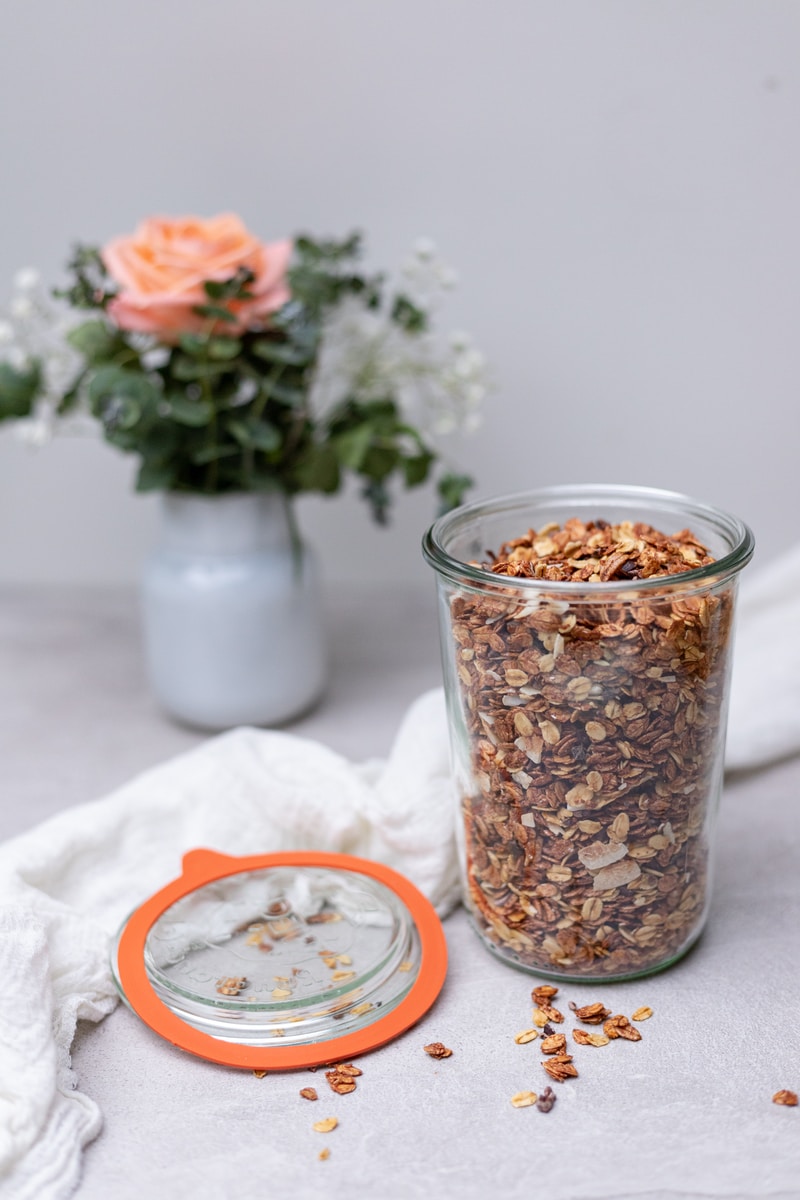Are “Whole” Nutrient Sources Better for Horses?

Based on a few recent conversations with members of some other horse groups regarding feeding advice I thought this would be a good topic for our weekly post.
One of the biggest mistakes horse owners make when it comes to feeding their horses is assuming that if it’s good for us it’s good for them. Considering that the digestive system and metabolism of a horse is much different than that of a human this isn’t a very sound assumption.
In addition many of the assumptions owners make about what’s good for humans is actually good for humans are not founded on science but that’s a whole other discussion.
As you all know my goal is to help owners provide the best feeding solutions for their horses, budget and lifestyle using commercially available feeds and supplements. Not only are these products more convenient but many of them are well researched and made with high production values resulting in a very good solution for feeding a horse.
If the best solution is “all natural” then I am all for it but here are some reasons that many times this is not the case.
Defining “All Natural”
Virtually all of the primary ingredients in commercial feed are “natural”. Grain, components of grain and forage products are natural. These ingredients have been processed to be more available and palatable to horses but they are still natural.
Many people consider “whole ingredients” to be a more natural source of nutrition since they have not been altered or modified in any way. In many cases these “whole” foods are a much better source of nutrition for humans than their processed counterparts. The individual components of a coconut almond chocolate bar have benefits for humans but consumed in the final form not so much!
This is not always the case with horses. Many ingredients in horse feed and supplements are not available to the horse unless it has been properly processed. Soy is a great example of this. Raw soy is actually toxic to horses since it contains protein inhibitors. Untreated soy will actually render proteins ineffective in horses. However when soy is processed at the proper temperature for the correct length of time it becomes an excellent source of protein and lysine for horses.
Grass Is the Only “Natural” Nutritional Source for Horses
Hundreds of thousands of years of evolution have given horses the ability to live reasonably healthy lives by processing a very poor source of nutrition…grass. The 120 feet, triple bend disaster that is the horse’s digestive system is very good at extracting maximum nutrition from a not very nutritious source of energy.
It is true that hungry horses will opt to browse on whatever plant matter is available but unlike goats or sheep or other ruminant herbivores horses don’t really thrive on other feed sources.
Add to this the fact that wild horses have evolved to thrive on poor grass. If we turn most wild mustangs out on a lush New England pasture there is a high probability that the mustang will not fare very well.
Any equine nutrition specialist worth a damn will tell you that forage is the first and most important component of the equine diet and should represent a MINIMUM of 80% of a horse’s daily dietary feed volume.
Having a horse thrive on primarily forage is a pretty easy goal when we are dealing with a healthy horse, with good teeth doing not much more than standing around eating all day. It becomes a real challenge when we ask our horses to work for us and burn more calories and nutrients than forage is able to provide.
This article is not about supplementing forage diets, that is the subject of another article. What I would like to focus on are the reasons why processed feeds are better at meeting the supplementation needs than “whole” sources of supplementation.
“Processed feed” v. “Whole food”
If we can all agree that grass is the only “natural” food source for horses then it should be easy to understand that any supplemental products we introduce to the horse should be in a form that is more easily digested in a system designed to digest grass.
Cereal Grains
Cereal grains like corn, oats, wheat and barley have been supplementing forage diets for working horses for thousands of years. They are tasty and usually well tolerated by horses. Cereal grains have also been widely available and relatively inexpensive making them popular supplements to forage diets.
One of the factors that these cereal grains share is that they are all grasses so they are not entirely foreign to the horse’s natural digestion. Unlike coconuts, brazil nuts, canola oil and other things people try to use as supplements, horses will in due natural course consume cereal grains in the wild.
Of course, these grains represent a very small portion of total volume consumed so if one of Marc Antony’s cavalry ponies got into the oat bin it would have had the same problem our horses would. Laminitis has been referenced in horse husbandry for thousands of years and the treatment hasn’t changed much.
These grains are still significant ingredients of modern feeds but technology has allowed us to separate their various components to make them more bioavailable while moderating some of the less beneficial components like starch and sugar.
There is a big “anti grain” movement in the horse world and for good reason. Feeding whole grain has a number of consequences like high NSC and low digestibility. However, I will occasionally run into the “old school” owner that insists whole grain is the best way to feed a horse. Recently I’ve come across a few who insist that feeding whole grain is better than pelleted feed because they “know what their horse is eating”. Yep ya do and it ain’t really good for them.
Processing cereal grains and other ingredients enable us to include the good and exclude the bad.
Forage Replacements
Many modern low starch feeds are relying on highly digestible cousins of grass and legume forages.
Beet pulp provides a very highly digestible forage with good protein and low NSC. Virtually all of the recently released quality feeds contain large amounts of beet pulp.
Soy hulls are another example of a high quality fiber source for feeds.
“Whole” Sources of Nutrients
While it is true that natural sources of vitamins, minerals, proteins and other nutrients are better sources than synthetic sources it is not true that “pure unaltered” sources of these nutrients are the best source.
One of the conversations that prompted me to write this article involved Brazil nuts as the best source of selenium for horses. I have to admit that the original poster put up a valiant fight to convince me that Brazil nuts were a healthier source of selenium than a selenium supplement.
Here are some of the problems with feeding whole sources of a nutrient:
Variable Concentration
Since hay is the primary source of nutrition for our horses it can be a great example of nutrient density in an original source. The nutritional value of hay will change substantially based on dozens of factors including the time of day it is harvested. Hay mowed first thing in the morning will have a much different profile than that same hay mowed an hour before sundown.
Brazil nuts are a natural source of selenium. I’m sure that if we analyzed 100 nuts from different sources the level of selenium would change dramatically. So how many nuts will be required to meet the selenium needs of a particular horse? It depends on how much selenium is in any particular nut. We could go with an average but…
How about the other components of the nut? Any problem with fats? How about toxins? Most hardwood nuts provide a risk of toxins for horses.
When asked to provide the research behind her decision to use Brazil nuts for selenium the poster provided a screen shot from a natural horse care forum stating clearly that “Brazil nuts are excellent sources of natural selenium and horses love them”! Well then, I’m on board!
Of course being me I found the forum and two equine vets in the same thread basically said “ya gotta be crazy”.
Ignoring the question of whether or not any nutrient is really beneficial or harmful to a horse (turmeric and aloe fix everything) when the benefit has been determined to be necessary and beneficial an extracted source that is tested, metered and measurable is always preferred to a natural or “whole” source.
Purity, density and quality can be fixed and monitored in processed supplements. Of course, these metrics are established by people in companies so the simple fact that a compound contains a nutrient does not ensure that it has the quality and bioavailability necessary for your horse. Do your homework when choosing a nutrient source.
Absorption Rate
All organisms absorb nutrients at different rates and horses are no exception. In fact, because grass contains high levels of some minerals that can be very toxic to horses they have developed high tolerance to these components using mechanisms that limit the absorption of these compounds.
There are some supplement companies that will raise your hysteria levels over things like iron, magnesium and other minerals in order to promote their products when in reality horses absorb very little of these minerals when introduced in their natural environment.
One recent supplementation trend has been the addition of Omega 3 and 6 volatile fatty acids. Grass is the primary source of VFA for horses but when horses are on dry lots or poor pasture this balance of VFA is not ideal.
When you stalk nutrition groups the way I do you can come across opinions to support everyone’s favorite supplement and one of the favorite favorites is flaxseed. The magical supplement containing the perfect ratio of omega VFA for horses…Or is it?
According to research blood serum levels for healthy horses on natural pasture are 6 parts omega 6 and 1 part omega 3. This research also shows that the proper feed ratio to achieve that blood plasma ratio is 3 parts omega 3 to 1 part omega 6. Flaxseed provides 1 omega 6 to 4 omega 3. Inverted.
Contamination
All producers of quality horse feed and supplements have their ingredients tested for contamination of toxins and molds. Quality feed mills have biosecurity protocols in place to avoid contamination.
Since individual whole commodities like corn, oats, flaxseed and sunflower seeds aren’t necessarily packaged for horses they may not be tested. In the case of flaxseed and sunflower seeds they almost certainly aren’t tested.
As always, if you are feeding quality forage in sufficient quantity and supplementing with the appropriate feed or balancer your horse really shouldn’t need any additional nutritional supplements.
While it is true that there are many very poor quality commercial feeds on the shelves out there, there are some very good feeds available. Choosing a quality premium feed from a reputable mill is a better choice than using “whole” commodities because you think that you are feeding a “pure” product.
